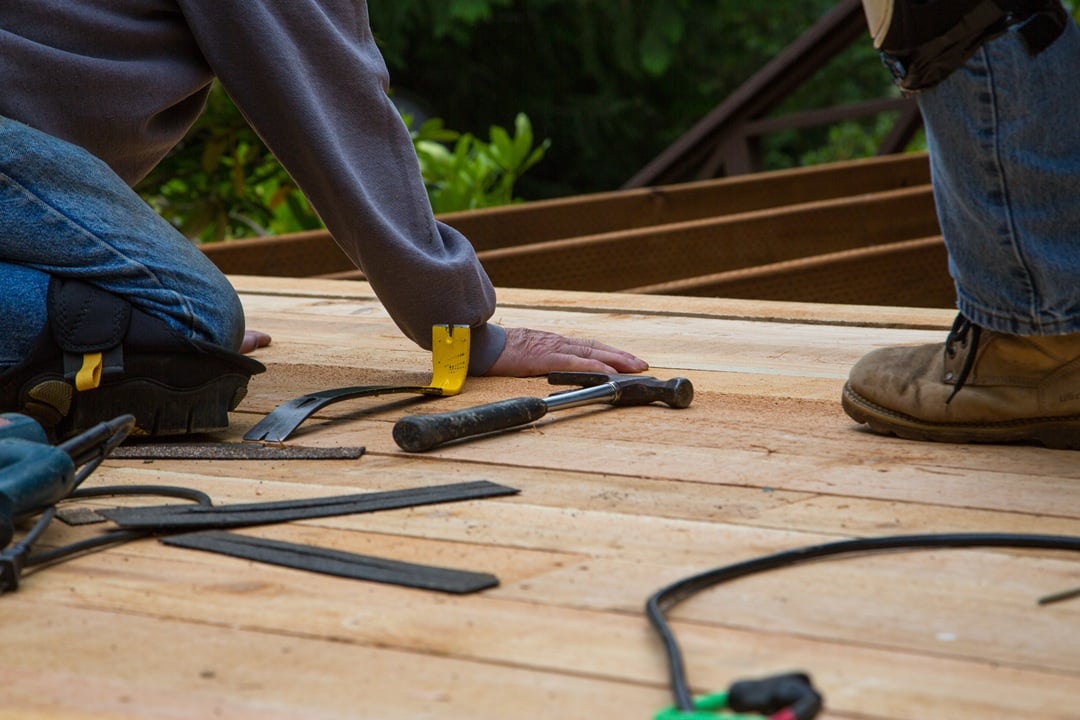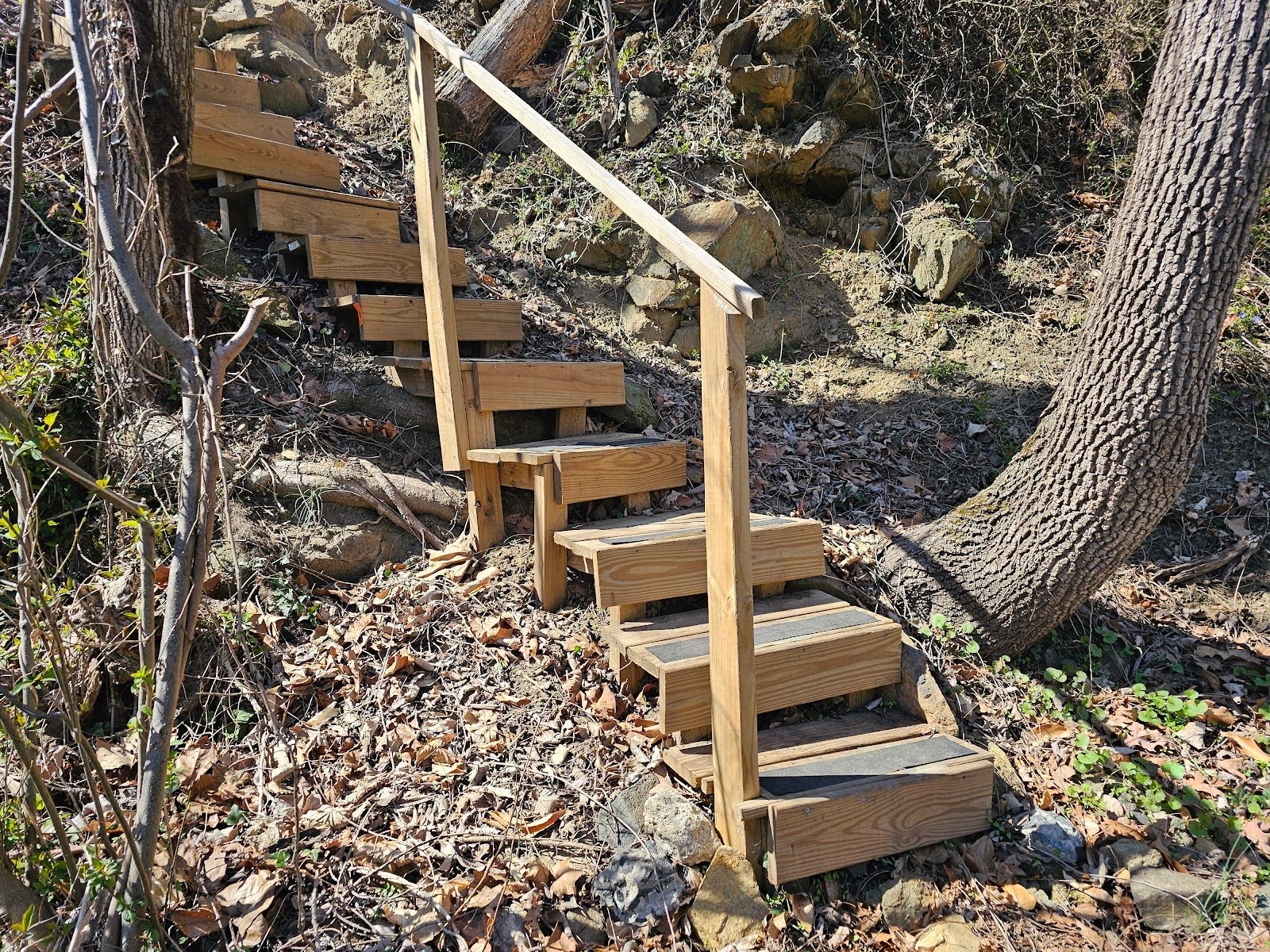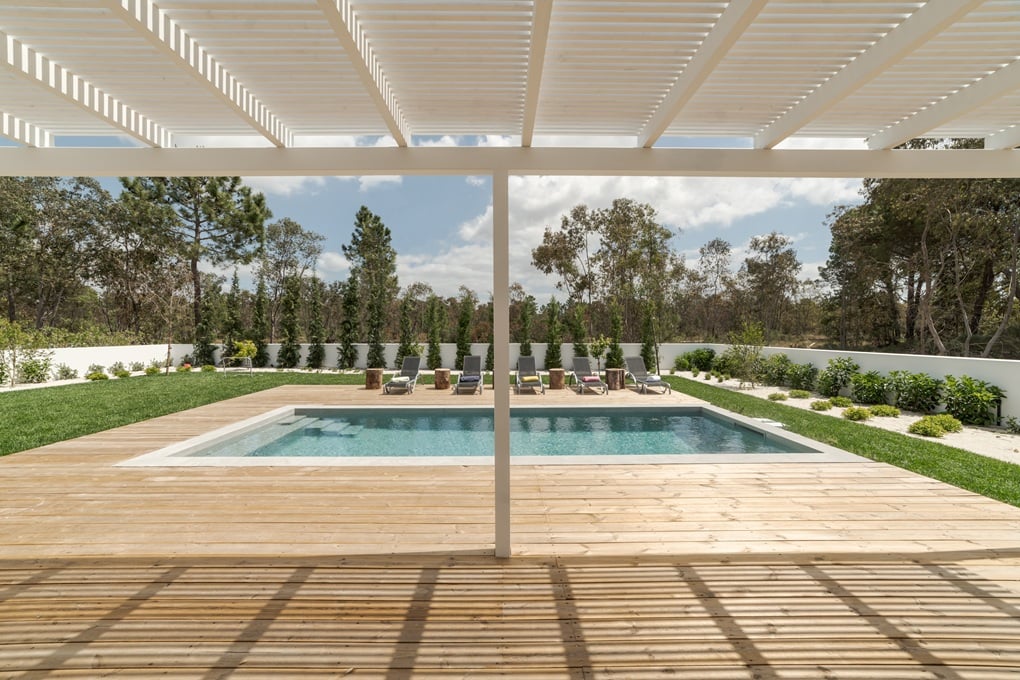Enhancing Your Outdoor Space with a Concrete Patio Stair
This past week we started taking a look at a stairway used to connect an outdoor yard space to an upper patio. The stairway is built almost entirely out of concrete, but the inner portion of the horizontal threads are built with an exposed aggregate at the surface of the tread. This exposed aggregate provides multiple benefits.
Firstly, it creates an interesting visual accent because the top of the tread is differentiated from the painted risers and sides of the stairs. Often, stair sides are referred to as stringers, but in this case with concrete steps that are individually cast and poured into separate areas of form work, it might not be accurate to refer to the sides of the stairs as stringers because generally stringers are unified to connect multiple areas of the stairway together.
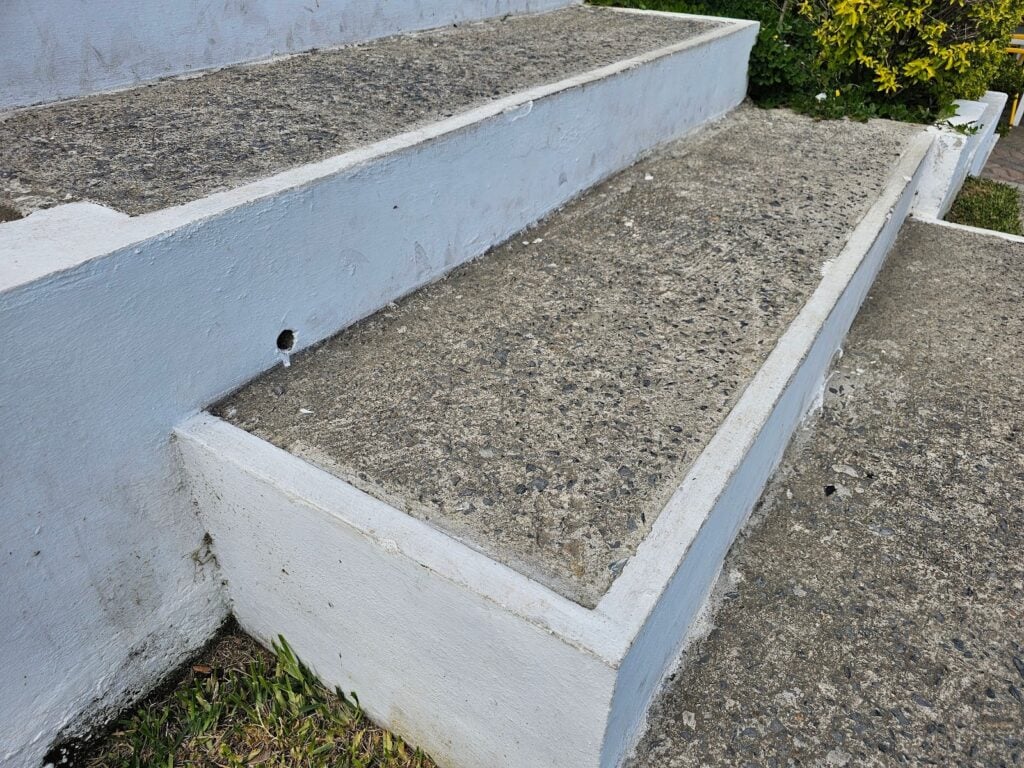
In this particular case, to create a both functionally useful texture at the surface and a visual differentiation, the aggregate in the concrete has been treated to be exposed at the horizontal walking tread area of each of the steps. They could have done this treatment at the entirety of the stairway and achieved a uniform type of aesthetic, but the selective application provides a visual distinction which has an interesting look.
From a functional perspective, it’s not actually helpful to have exposed aggregates at the sides of the stair or at a stringer area of a stairway. As well, it provides no functional benefit to have an exposed aggregate at the riser of the stair. In either case though, it would likely be easier and a lower labor cost to have a continuous treatment because the different areas create a border or area of separation between the treatments which requires additional work, by hand the detailed finishing of these elements cannot be done in an automated way. Handcrafting, especially in an edge like this requires particular experience and attention.

At the left side of the stairway though, you can see a transition where the finish here joins against a rough and unfinished area of concrete and stone at this location. At the time of construction of the stairway, this location was covered with form boards which prevented the concrete at the side of the stair from being treated. To smooth this rough looking concrete, it could be treated after the installation of the newer stairway. Applying a topping cement or parge coating, would be applicable, a possible option.
The entirety of the concrete stairway surface is generally framed or formed with boards or panel type materials which support the wet concrete while it is poured and liquid form. These boards need to be built very strong because concrete is extremely heavy. Once the concrete cures though, the boards basically serve no ongoing or future purpose and those boards are stripped off or taken off piece by piece and removed. Removing form boards can be difficult and may require extreme force.
The concrete basically hardens around the edges of the board and into the cracks or crevices and the individual fingerprint of the grain pattern of every board used in the formwork. Sometimes very large pry bars and even digging bars are used to trip the formwork from the hardened concrete. It must be done with care though, especially where the surface of the concrete is intended to remain exposed, such as the surface shown here.

Normally, in most cases, depending on several factors such as ambient temperature, and the amount of liquid used in the mix of the concrete and the time of day of the concrete mix and pour, it might be possible to strip the formboards from the concrete on the same day as the pour while the concrete is still very “green”. At this point in time, if done correctly, the concrete may have a lighter hold on the formwork.
New concrete is often called green. It doesn’t mean that the concrete has an actual green color, but brand new concrete, before it is fully cured, generally has a much darker color and is referred to as green to indicate that it’s still brand new. During this time, the concrete is very impressionable and also sensitive and easily damaged. Therefore, during the earliest stages of the concrete curing process, the concrete must be well protected.
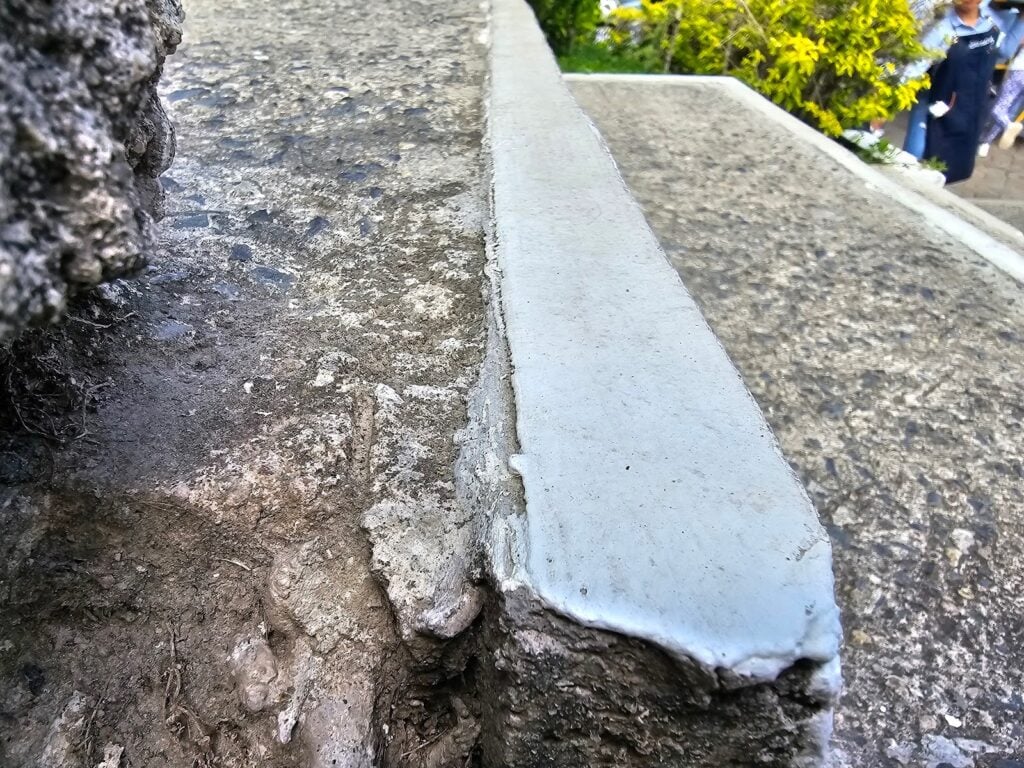
We recommend building and homeowners here in Washington DC use a contractor, like us, who understands and cares about quality, deck and patio longevity, snd simply doing things right. Always, feel free to reach out to us here at Dupont Decks and Patios, you can give us a can or just drop us a line. We are happy to help with almost all steps of the deck and patio building and design process. Let us know about your ideas and talk to us if you have questions about possibilities. You can call us at (202) 774-9128. You can find us online at https://dupontdeckspatiosdc.com and you can email us there as well at https://dupontdeckspatiosdc.com
The information provided here on our website and in our blogs is intended to help by providing information to our clients and our neighbors here in DC about some of the options in details in the building construction industry, specifically focused on decks, patios, and outdoor spaces. Reach out for any questions at all.


